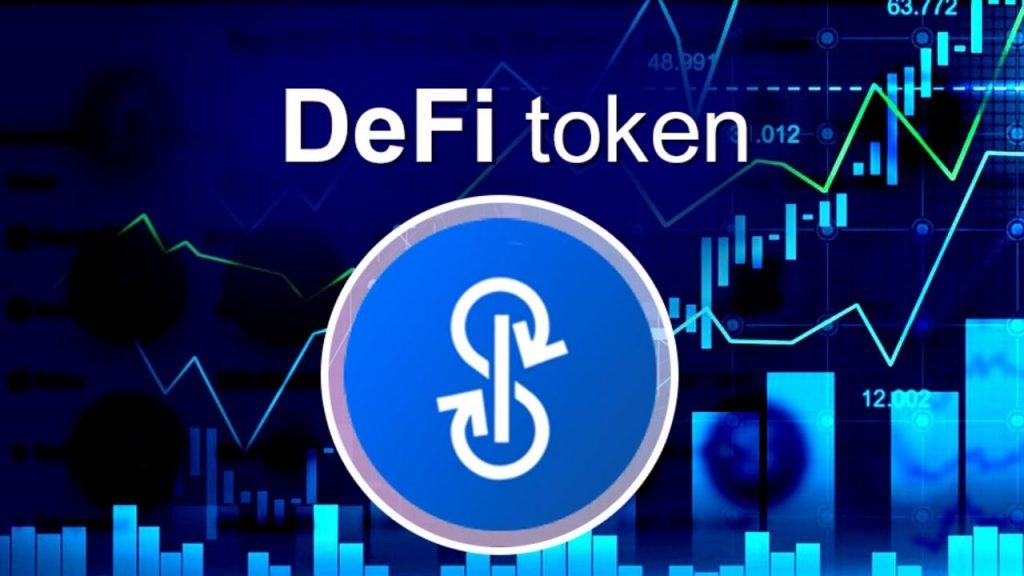Yearn Finance, also known as yEarn Finance or yearn.finance, has become increasingly popular following a recent massive price rally. As the platform recently rose to prominence after launching its tokenized insurance product yInsure Finance, the following article looks at the fundamentals that prompted the development of the entire yEarn Finance platform.

Yearn.finance (yEarn), a yield aggregation platform on Ethereum, was built single-handedly by Andre Cronje. yEarn has evolved into an ecosystem of protocols aimed at maximizing the annual percentage yields (APY) for its users. It plays a part in the yield farming craze that started with Compound’s COMP token distribution. By utilizing DeFi protocols such as Curve, Compound, Aave, and dYdX, yEarn optimizes token lending. In short, it is a sophisticated protocol that diverts liquidity to different sectors of the DeFi universe to maximize returns.
yEarn is perhaps best known for yPool on Curve. When a user deposits tokens, they are converted into “yield optimized tokens” (yTokens) such as yUSDC, yUSDT, and yDAI. As a result, the user is able to earn not only the lending fees but also the trading fees from Curve. DeFi liquidity is routed through yEarn, and yPools have had some of the best lending rates in 2020.
It has been praised as one of the most decentralized crypto projects. It’s also been nicknamed as the “Bitcoin of DeFi” for the high APY seen by its early adopters.
History of yearn.finance
Andre Cronje, founder of Yearn Finance, could serve as an inspiration to many looking to make a mark in the crypto space. He opted out of a law degree to focus on computer science instead. After completing a computer science program in just six months, he joined the FinTech industry. The concept of distributed ledger technology captured his imagination, and then he discovered cryptocurrencies. Later, he became intrigued by DeFi and the potential yields that could be achieved with stablecoins.

Andre Cronje
Cronje became an influencer in the DeFi space and earned respect for his code reviews before he founded yEarn. It was his obsession with dissecting the code of other platforms that helped him finalize his own. During his exploration phase, he became convinced that DeFi was too complicated for the average user. He then decided to focus on two aspects of his project to help rectify this problem—user experience and safety.
Early Versions of yearn.finance
The first version of yEarn was created as a result of Cronje handling money for friends and family. He wanted to use stablecoins to gain a profit. At the time there was Aave, Fulcrum, Compound, and dYdX. Cronje would manually compare these protocols to see which offered the best annual percentage return (APR).

Manually moving tokens and paying gas fees all the time became tiresome for him. So he wrote some smart contracts that would do the calculations for him. Later he wrote the iterations for the yTokens. By reading the normalized APR output, the yTokens could move to the place offering the best returns.
Initially, he used this system for himself before opening it to others. After all, the more people that used the protocol the better. That’s because each time a user interacted, the smart contracts checked to see if a rebalance was necessary. The higher the frequency of interactions the more shifts between protocols occurred. And the more shifts the higher the returns.
Overall, yEarn generated better returns than any of its downstream sources individually. Cronje’s idea was very simple: send more capital to the place with the best returns. The gas fees, however, had to be factored in, as they accumulated whenever the tokens moved.
How yTokens Work
Think of yTokens as a pool. As mentioned, whenever a user deposits or withdraws funds from this pool, the smart contract checks the APR. It operates like an oracle but not exactly. Cronje explains it like this, “Oracles check off-chain, while this does not. Everything is on-chain.”
While he does not refer to yTokens as oracles in the traditional sense, he nonetheless refers to them as “APR Oracles.” They normalize on-chain information like a robot seeking the highest yield. And it’s all automated with smart contracts to move funds where they need to be.
Let’s say there is a DAI pool. When a user deposits more DAI, the smart contract asks the APR Oracle where the highest APR is. If the APR oracle says its Aave, it moves the DAI tokens to Aave. So the user can sit back and earn interest on Aave.
Now, let’s say another depositor comes in with DAI. The smart contract checks the APR oracle and this time, it finds that the best rate is on Compound. So it withdraws the DAI from Aave, returns the aTokens to Aave, and deposits the DAI into Compound. Now the user has Compound cTokens.
So, each time a user interacts, the APR oracle asks where the funds should go for the best rate.
Calculating Risk with yearn.finance
In the early version of yEarn, the protocol could not quantify risk, it just went to the protocol with the highest rate. But questions still needed to be asked like, how liquid is the downstream source? And how will the pool be affected upon moving?
In the early days moving $10k to a downstream protocol would have little effect on the APR. But these days with yEarn’s growing popularity, shuffling around millions of dollars to various protocols can have profound effects. APRs can drop quickly (like from a 10% return to 5%) when large amounts of money are transferred. So the smart contract not only has to assess liquidity so it can quickly move tokens when necessary. But it also has to assess what will happen to the APR when large amounts of capital are dumped into a protocol.
The yearn.finance Ecosystem
Yearn.finance, or yEarn, as it’s also called, is an entire ecosystem composed not only of yearn.finance, but which also includes ytrade.finance, yliquidate.finance, iborrow.finance, and yswap.exchange. Yearn.finance is the focus of this article but you can dig deeper into the others on their website.

yEarn supports DAI, USDC, USDT, TUSD, and sUSD stablecoins. Those new to DeFi might perceive yEarn to be a complex protocol. And due to the lack of documentation on the project, this might serve to add an element of mystery. But the concept is quite simple. yEarn moves the supported stablecoins between Compound, Aave, dYdX, and Curve depending on which asset pool is offering the highest yield.
The purpose of using Curve is to increase rewards in yEarn tokens. So when a user deposits DAI they receive yDAI in return. They can then supply yDAI to Curve to earn trading fees in addition to yield rewards. The protocol takes a small cut that is only available to YFI token holders.

To try it out, just go to yearn.finance/zap and deposit at least one of these tokens and they will start earning interest. This product is still in beta, so always start with small amounts until you know what you’re doing.
The YFI Governance Token
YFI is an ERC-20 token that governs the yearn.finance ecosystem. The protocol distributes YFI to liquidity providers (LPs) who supply certain yTokens. The goal was to have YFI used for voting and not as a means of exchange.
Cronje has stressed multiple times that the YFI token is valueless and that it wouldn’t be traded on any exchanges. However, reverse psychology seems to be in effect because at $6,824 (at the time of writing) it’s in second place to Bitcoin and far from valueless. Currently, users can trade YFI on both Binance and Uniswap. When Binance debuted it, YFI quickly rocketed 50% in value. And the price jumped 4,000% when Uniswap listed it. The market has fervently disagreed with its zero valuation and YFI’s success has since spawned copycats.

But Cronje believes the stronger supporters are the people who use the protocol. He has always recommended that people earn the YFI token by using the protocol instead of buying it off an exchange. Investors have decided to buy it anyway banking on future revenue from the protocol.
YFI Total Value Locked
Cronje believes that a conflict exists between the token’s purpose and the investor’s valuation. In terms of TVL, DeFi Pulse has yearn.finance listed at $579 million (at the time of this writing). TVL is where investors typically start when scrutinizing a project in DeFi.
YFI hodlers can vote on issues regarding all the protocols in the yearn.finance ecosystem. There was no ICO on launch. And if you’re interested, you can earn YFI by providing liquidity to yEarn’s ecosystem. Or you can purchase YFI on Binance or Uniswap. The max supply of YFI tokens is 30,000.
YFI governance can be tricky to figure out as the details are spread out over a series of posts on Medium. But essentially, the system can be summarized as 1 YFI token equals one vote.
How to Earn YFI
Things can always change with future governance, but one of the most popular ways to earn YFI is through the yCurve pool. LPs who supply yTokens to the yPool in Curve Finance, receive yCRV tokens in exchange. yCRV can then be deposited into the yGov pool back at yEarn. There is a guide on Curve if you’re interested.
Another way is to deposit a mix of DAI and YFI into the Balancer protocol where LPs receive BAL tokens in exchange. By depositing BAL into the yGov pool it can be exchanged for YFI.
Users can also deposit a mix of YFI and yCRV into Balancer in exchange for the Balancer Pool Token (BPT). They can then deposit BPT into yGov for YFI tokens. This process is similar to staking crypto in exchange for block rewards. Except they are staking Curve and Balancer tokens in yEarn in exchange for YFI and governance rights.
The Future of yearn.finance
When Cronje said DeFi has become too complicated for the average person, he was right. Anyone who can simplify the process and provide a better user experience stands a better chance at gaining mass adoption. And while any Yield Farming strategy involves a high level of risk, yEarn has provided some nice returns this year with relatively limited risk. Albeit, whenever a user makes a play on yGov with BPT tokens, layers of derivatives are activated beneath the underlying asset. That means that anything can go wrong with just one link in that chain which makes it hard to call it a low-risk strategy.
While Cronje is the only developer, a community has grown up around yEarn. And their commitment to community governance is stellar. YFI is a strongly designed and highly desired token. Changes to the protocol are done via on-chain proposals and voting.

The savvy DeFi user can get rewards. And at the time of this writing YFI is right behind Bitcoin in terms of price per coin. The price of YFI might be a result of TVL locked in the protocol, or as Cronje said, just simply the token’s purpose vs. the investor’s valuation. Investors have ignored the pinned tweet at yearn.finance’s Twitter account that reads, “The token is to manage the platform. If you aren’t interested in managing the platform, stay away from the token.”
Again, is reverse psychology at play here?
Via this site

